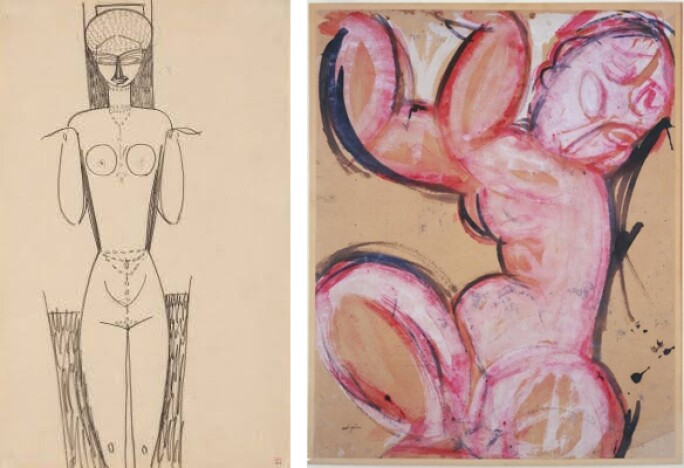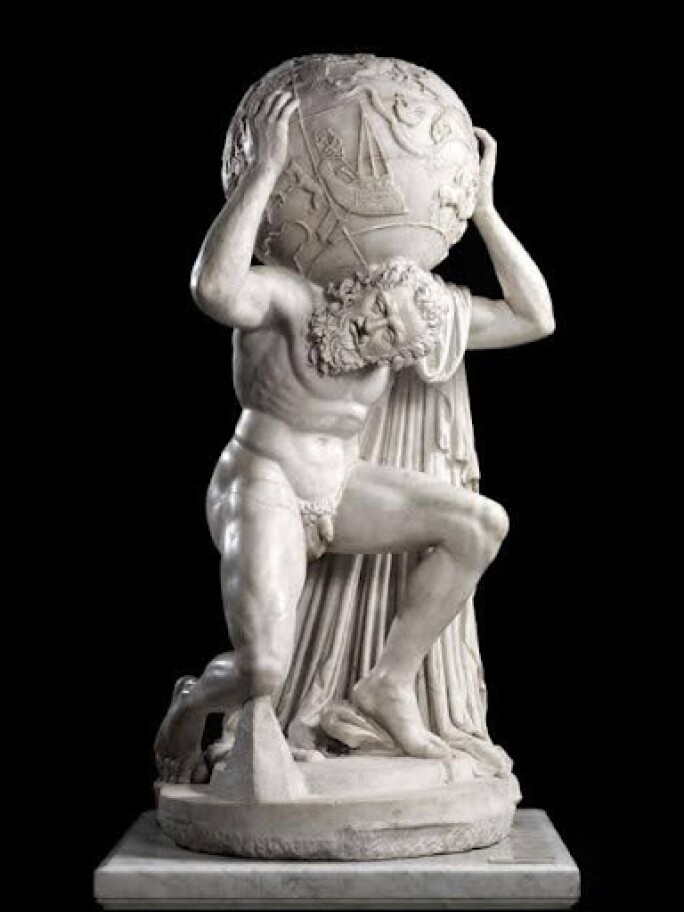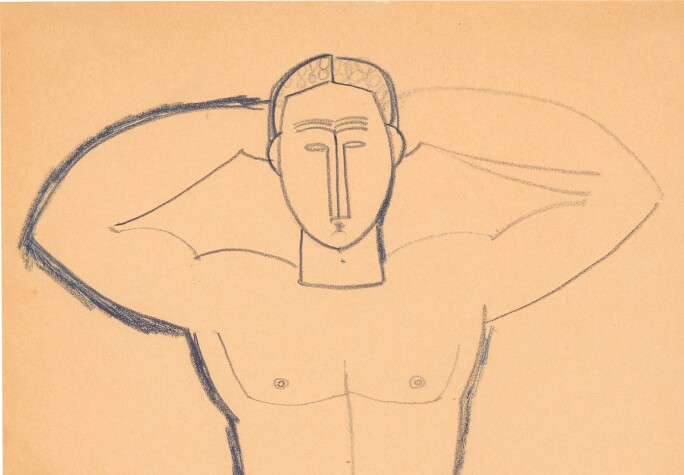Amedeo Modigliani’s drawing Male caryatid, frontal view, three-quarter length, hands behind his head (circa 1911) originates from a pivotal moment in the artist’s career, marked by his transition from sculpture to drawing and painting, and by his deepening engagement with both classical and non-Western artistic traditions. Living in Paris at this time, Modigliani was immersed in the dynamic avant-garde scene of Montparnasse, where he formed connections with artists such as Constantin Brâncuși, Pablo Picasso, and Chaïm Soutine. Influenced by Brâncuși’s abstract sculptural style and the stylised aesthetics of African and Cycladic art, Modigliani began to develop his signature approach to the human figure—characterised by elongated limbs, refined outlines, and a harmonious balance between classical grace and modernist innovation. These years were also marked by personal and artistic hardship: Modigliani’s health was deteriorating due to tuberculosis, and the physical and financial demands of sculpture ultimately compelled him to focus on drawing and painting, where he could explore similar themes of weight, balance, and the human form with greater immediacy.

Right: FIG. 2, AMEDEO MODIGLIANI, CARYATID, GOUACHE AND INK ON PAPER, 1914, MUSEUM OF MODERN ART, NEW YORK.

A rarer example within Modigliani’s body of work, Male caryatid showcases his refined understanding of the human figure and his distinctive blend of classical inspiration with modernist style. Unlike his many depictions of female caryatids—figures drawn from classical architecture and often used as sculptural supports—this male version, representing the mythological Atlas, is a notable exception. In Greek mythology, Atlas is the Titan condemned to carry the heavens, and such male representations are exceptionally uncommon in Modigliani’s œuvre. This drawing exemplifies the artist’s hallmark aesthetic, with elongated features that evoke both grace and a statuesque quality. The pose—arms arched behind the head—adds a dynamic sense of tension, balancing force and fluidity. Surrounding the figure, a vivid blue outline charges the composition with energy, almost like a visual halo or aura. At the same time, the delicately rendered facial features anchor the work with calm and poise. Through this rare portrayal, Modigliani reimagines masculine strength, infusing it with elegance and introspection. The work emphasises his continued fascination with the human form as a timeless subject for formal innovation and expressive experimentation, while also highlighting the rarity of male figures within his predominantly female-centred artistic practice.

The caryatid motif was one of Modigliani’s central preoccupations across all media. As Noël Alexandre notes:
“Modigliani was enchanted by these figures - at once real and unreal - whose inflexibility, imposed by their functional role, is relieved by the fantasy of their being atlantes or idealized women. His drawings of caryatids develop from figures of great expressive freedom in 1911 to more austere figures, geometric and sculptural, in 1912 and early 1913. In these drawings, as in the best of his theatrical drawings, Modigliani’s style is fully developed, as he unites artifice and nature, the sensual and the hieratic, audacity and grace.”
The present work was first owned by Paul Alexandre, a key patron of the arts and one of Modigliani’s closest confidants. It was through Alexandre’s influence that Modigliani was introduced to African art, Khmer sculpture, and artefacts at the Trocadéro in 1909 and 1910—an experience that had a profound and lasting impact on his artistic development. Alexandre’s collection would become one of the most significant private holdings of Modigliani’s drawings and played a vital role in championing the artist’s early career. Male caryatid was included in the landmark exhibition Drawings from the Collection of Paul Alexandre, held at the Palazzo Grassi in Venice from 1993 to 1994. In more recent years, the drawing has been shown in major museums around the world, including the Musée d'Art Classique in Mougins and the Jewish Museum in New York, where it featured in the acclaimed Modigliani Unmasked exhibition of 2017–18.